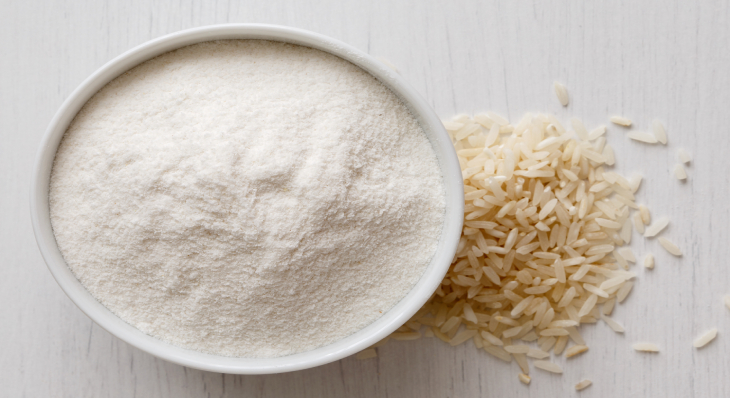Raw Rice Flour

What is Rice Flour?
Rice flour is finely milled rice used principally in gluten-free baking or as a dusting powder in commercial scale baking operations. Starch is the most important fraction of this flour and is detrimental to its functionality in food systems such as baking, noodles, gravies, crackers and many others.
Rice flour, either brown or refined, is used in gluten-free baking as a key ingredient for polymeric network formation and as dusting powder for high hydration doughs to prevent dough stickup.
- It has a neutral flavor
- Its color ranges from white to brown (depending on bran content)
- It’s digested easily
- It is considered hypoallergenic
Function
Rice flour is used as an alternative to wheat flour in gluten-free baked goods. Bread produced with this ingredient has lower loaf volume, harder texture, and shorter shelf life.
When used in gluten-free bread, it is important to use it in combination with other flours, starches, gums, and enzymes to help mimic the gluten matrix and improve water absorption.
Composition of rice flour starch compared to wheat flour starch
| Flour Type | Amylose (% of starch) | Amylopectin (% of starch) | Gelatinization Range (°C / °F) | Granule Diameter (microns) | Granule Diameter (microns) |
| Wheat | 25 | 75 | 58-64 | 1-45 | Round, lenticular |
| Rice (long grain, white) | 23-26 | 74-77 | 71-74 | 3-8 |
Compound
Polygonal granule |
| Rice (short grain, white) | 18-20 | 80-82 | 65-67 | 3-8 |
Compound
Polygonal granule |
| Glutinous rice | 1-2-3 | 97-98.8 | 58-67 | 1-7 |
Irregular
Polyhedral granule |
Commercial Production
White rice production involves dehulling and tempering prior to milling to remove its bran. Enriching is done for table rice, but not for rice flour production unless required by the customer.
There are several milling options available, yielding different particle sizes, textures, and starch content. While ash content is detrimental in wheat flour dry milling, the lipid content is monitored for evaluating the degree of rice flour milling. Here is a process flow diagram for dry rice milling:
References
Wei, X., and Huang, X. “Origin, Taxonomy, and Phylogenetics of Rice.” Rice: Chemistry and Technology, 4th edition, Published by Elsevier Inc. in cooperation with AACC International, 2019, pp. 1–2.
Yano, H. Recent practical researches in the development of gluten-free breads. npj Sci Food 3, 7 (2019). https://doi.org/10.1038/s41538-019-0040-1
Casper, J.L., and Atwell, W.A. “Gluten-Free Ingredients.” Gluten-Free Baked Products, AACC International, Inc., 2014, pp. 23–47.
Gujral, H.S., and M.R. Cristina. “Improvement of the Breadmaking Quality of Rice Flour by Glucose Oxidase.” Food Research International, vol. 37, no. 1, 2004, pp. 75–81.
Zhou, W., and Y. Huri. “5 Rice.” Bakery Products Science and Technology, 2nd ed., Wiley Blackwell, 2014, pp. 103–116.

